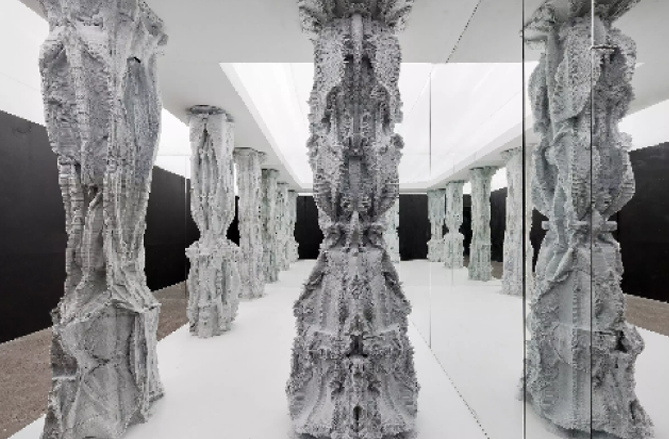The Pros and Cons of AI: Is It Taking Over?
As AI becomes more and more prominent in our day to day lives we believe it is important to understand how it will affect us and our creative process here at Design Office. We also think it is vital for our clients to understand how AI will improve our services, but also why it is not good enough to go without a human touch. This blog will go over some of the main pros and cons of AI generated writing and designing, so, to start with the good news, the pros of AI are plentiful.
1. AI Makes Fewer Errors
Forbes makes this point and it’s very relevant in terms of content writing, this is probably one of the biggest pros. AI will not make typos and, if made to look over already written or designed work, will find these errors in seconds. The benefits of this range from streamlining the design or writing process, allowing us to work faster, to reducing the chances of missing a mistake before it goes to a client. A team of people can check, double check and triple check, but may still miss something, AI won’t.


2. It Can Improve Human Productivity
Driven entirely by data and logic, AI can make itself as productive as possible, but it can do this for us too. Using AI we can find out what, logically, is the best way to plan out a working day to maximise productivity. This should create a working environment that could not be more streamlined. Barbara Von Der Osten, writing for Rockcontent, highlights this and we think it is very relevant in our day to day practice. With lots of jobs on the go, spread between different people, the less time spent planning means more time spent designing, writing and focusing on the clients needs.
3. It Can Predict User Behavior
Stated by Debug Solution in their LinkedIn article, AI can analyse a design as though it is a customer to predict how it will be received. This would work in a similar way to using focus groups before a design is put out into the public. What makes this an improvement over a focus group is that it takes less time, less resources and allows smaller companies to still have access to a way of testing the reception of a design. However, as is the nature of AI, it will be entirely data driven so may not take into account human emotion as effectively.
4.AI and Humans Can Make a Great Team
AI is an incredible tool, designed to be used. It’s main purpose has always been to complete boring, repetitive and dangerous tasks, which is why it is so analytical and data based. This inadvertently has made it an excellent partner for any creative. The designer has the emotion, the creativity and everything that makes them human. The AI, has the Statistics, the data and the knowledge of everything on that can be found on the internet, all available in a second. Combining the two gives you the full package. A current example of this is mentioned by Rob Girling, in his article for Artefact Group, that example is ‘unimaginable shapes’ from the mind of Michael Hansmeyer. It is an innovation in architecture design which has been in the works since 2010. Computer based design started this project and AI could finally perfect it, but, it could not have been achieved by either humans nor AI alone. As the software improves and designers learn how to use it to their advantage a whole new generation of innovative design will appear, just as it did when digital design was first implemented.
5. Enhance Your SEO
Much like everything else that AI does, it does this quickly, efficiently and logically. Amanda Hetler, writing for TechTarget, makes this clear. AI can instantly search the internet for the key words and phrases to use in your websites content to make it appear highly on search engines. This is ideal for bringing more traffic to your website and is a service that we can offer. However, much like all of the pros on this list, there are cons that come with this. AI should not be considered a soul ‘solution’ and at Design Office we think this cannot be stressed enough.
With this in mind it is now important to go through the cons that AI brings with it as without understanding both sides it’s easy to fall into the trap of thinking that these new software’s can do no wrong. This is far from the truth and using only AI could land you and your business in some trouble.
1. No Creativity, No Innovation
Designing is about being innovative, coming up with something new that hasn’t been seen before so that the client is unique and stands out from their competitors. Returning to the Forbes article, they say that, By its nature, AI cannot achieve this. When the software generates something, such as an image, it takes bits from different sources, compiles them together into what you have asked for. By working in this way, no new idea has been come up with, just a version of something that the AI has learnt from. Using only AI in any creative field will lead to the same designs and styles being used over and over, with no growth and no changes that have never been seen before.
2. AI Generated Content Does Not Belong to You
This could be one of the biggest reasons why designers are still clearly needed alongside the development of AI and the rules around it. When anyone takes a photo or creates an image or design, it is immediately their copyright/intellectual property. In the case of our company when we then sell it to a client, it becomes their copyright. This is not true for anything generated by AI, Blake Brittain reports for Reuters. As an example, if an AI generates a whole advertisement for a companies new product, anyone can then use the exact same advert with no repercussions. This would lead to nobody being able to stand out from anyone else because everyone can take and use whatever they want.


3. AI Generated Images Might Infringe on Copyright
Similar to the previous point, because of how AI learns from what it can find online there is always a chance that what it generates is too similar to what it is learning from. Ruby Helyer brings this up in her writing for Make Use Of, she mentions a court case from Getty images where they claimed someone was infringing on their copyright by teaching an AI to create images based on others taken from the Getty Image stock. Once again this shows how using generative software alone can be dangerous when not moderated by a designer.
4. There is a Lack of Emotion to it
Looking at the job of content writers and SEO specialists, AI seems like it would be great at this as it can be more analytical, and It is, to an extent. The problem is that it can’t take human emotion into account leading to robotic sounding content that focuses more on using key words for search optimisation than it does on actually informing customers of anything important. This is another argument presented by Amanda Hetler for TechTarget, and, another example of how AI is a great tool but requires a person to monitor what its doing and make the necessary changes.
5. AI’s Over Use of SEO Could Hinder you
This is a surprising addition to TechTargets article which many people may not be aware of. As previously discussed AI SEO will focus heavily on including as many key search terms as possible. This can have the opposite affect on your businesses exposure due to a Google algorithm which identifies when a websites content is designed with only SEO in mind. At Design Office, we avoid writing any of our content using AI so that it all feels personal and actually performs better than using AI optimisation strategies.
Conclusion
Overall, AI is a great tool for designers that can lead to some really impressive work that innovates how we can be creative. However, it is just that, a tool. Trying to use it by itself without anyone to properly moderate how it is being used or what it is creating can actually cause many issues with copyright, plagiarism and just not connecting to the audience in the same way. In a world where AI is rapidly developing, having designers who can take advantage of that, while still keeping their originality and creativity, will fly into the forefront of design innovation. Which is what we always aim to achieve at Design Office.


